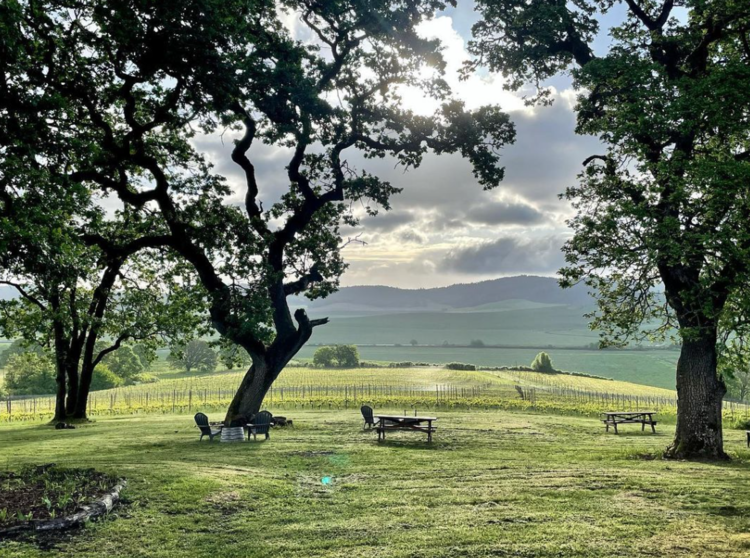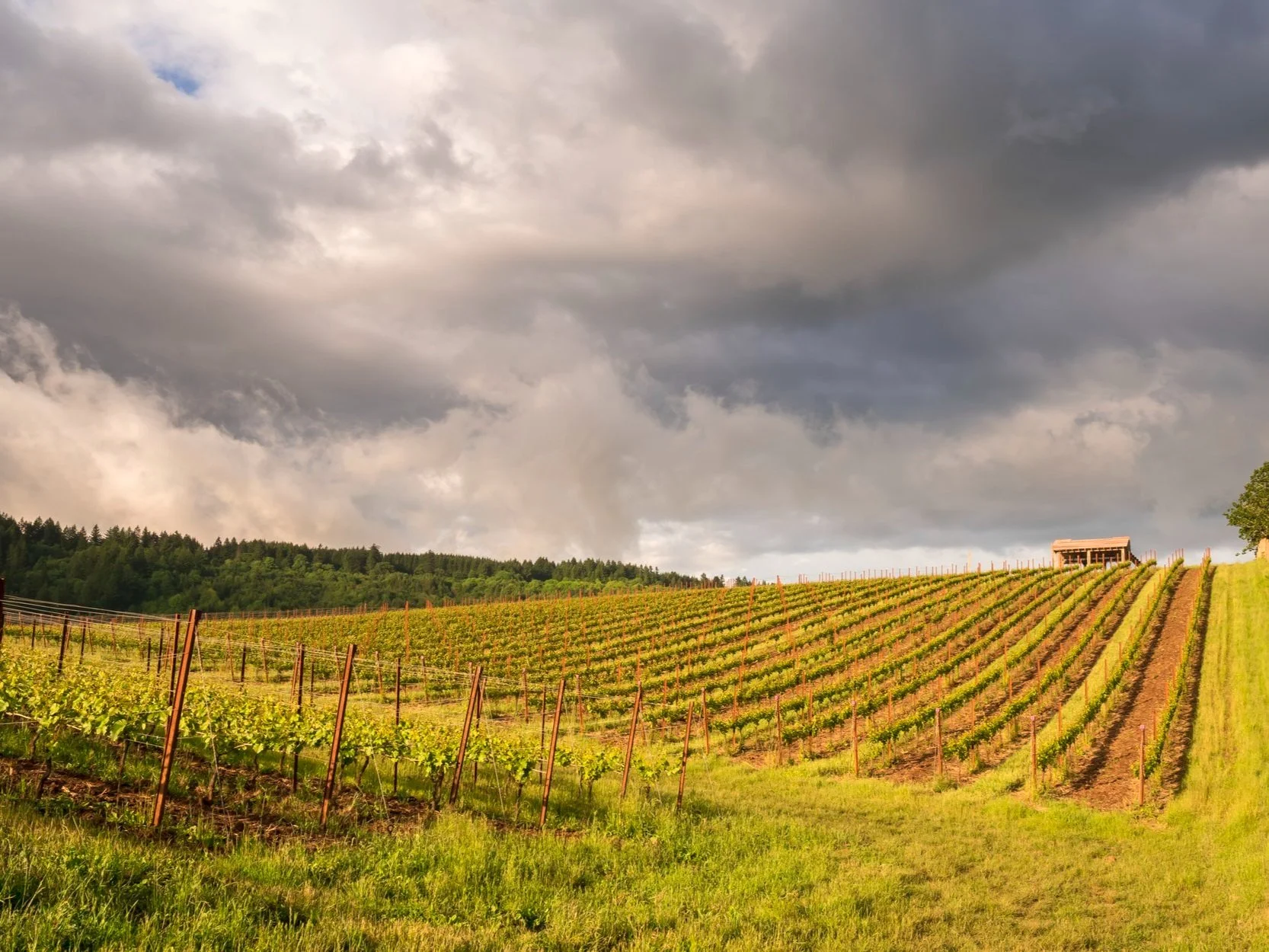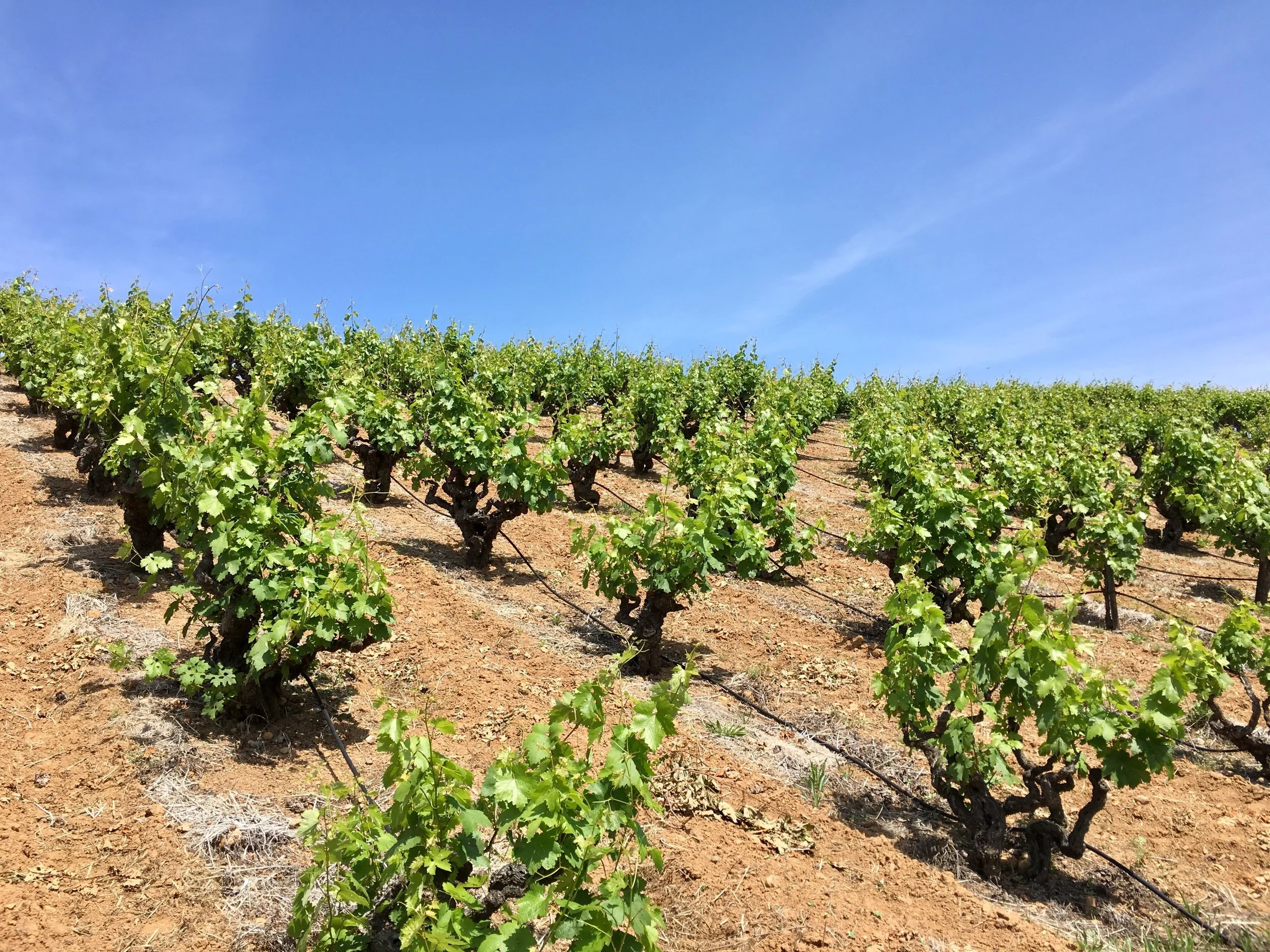
VINES
BRACKEN Vineyard / EOLA-AMITY HILLS AVA
Bracken is perched on the western benchlands of the Eola Hills, with elevations of 630-750 feet and views that stretch up and down the Willamette Valley. Here, the soils are predominantly Nekia, Ritner, Witzel and Jory - all of volcanic origin but with varying depths.
Burgundy has shown us that excellent Pinot Noir and Chardonnay can be grown in the same soil. Thus, the first vineyard plantings in 2016 were to Pinot Noir and Chardonnay with 5x7 spacing. Additional Chardonnay vines were planted in April 2019 with a 4x7 spacing. Finally, a significant replanting of vines took place in late 2021 to replace vole-damaged vines after a vole attack ensued in 2020. In 2021 we also added another 3.26 acres of new vineyard area - planted to Aligoté, Pinot Meunier, and additional Chardonnay. These vines are also planted in a 4 x7 spacing. This block should be finished in late 2023.
We believe in maintaining clean soils and a clean environment. We farm organically and began biodynamic practices in 2019. We also have selected a diversity of clonal material to ensure that the wines made from our site tell a story about the uniqueness of place, not clonal material.
We have partnered with many talented winemakers in our collective pursuit towards the production of exceptional wines from this site. Our current vintage partners include David Paige Wines, Twill Cellars, Violin, Junichi Fujita and Walter Scott. We are honored to have their support as we explore “the strangeness” or the uniqueness of the site that is Bracken.
Sojeau VINEYARD / EOLA-AMITY HILLS AVA
Sojeau is an 18 acre vineyard with a SW exposure on the west slope of the Eola Hills that owners Denny and T Peseau converted from a cherry orchard in 2007. Situated on the bench below Bracken Vineyard, it has predominantly Nekia, Ritner and Witzel soils. We share spectacular views of neighboring villages, the coastal hills and amazing sunsets. Exclusively Pinot Noir (Pommard, Wadenswil, Dijon 115) on 101-14 and 3309 rootstock, and Chardonnay (Dijon 76 and 95) on 3309 rootstock. Managed by Angel Martinez of Advanced Vineyard Systems and farmed organically.
Johan VINEYARD / VAN DUZER AVA
Johan Vineyard consists of 85 acres of gently sloping estate vineyards on a 175-acre site in the heart of the Willamette Valley, just west of Salem, Oregon. Situated on the southern edge of the Van Duzer corridor, these vineyards are blessed with afternoon ocean breezes and cool evening temperatures. Elevations range from approximately 180 to 380 feet. Soils are Helvetia, Steiwer, and Santiam silts - formed primarily from ancient marine sedimentary rock. Johan Vineyards is farmed with organic and biodynamic principles.
La Belle promenade / CHEHALEM MOUNTAIN AVA
Located outside of Newberg on Kings Grade Road, La Belle Promenade is comprised of some Nekia, but mostly Jory soils - which stands to reason since the western portion of the site consists of a thick layer of fractured basalt. A total of 33 acres of were planted in 2014 at elevations of 700 to 820 feet above sea level. Prior to the planting of this site, it was an abandoned cherry and prune orchard. The constant breeze allows farming by organic methods led by vineyard director Grant Coulter.
Teldeschi VINEYARD / DRY CREEK VALLEY AVA, CA
Our library Zinfandel was sourced from vines planted on the Teldeschi Home Ranch in 1889. Ray Teldeschi carefully attends to his land with minimal intervention. RayTeldeschi’s family arrived in Dry Creek Valley in the early 1900s and purchased their Home Ranch in the 1940s. These vineyards are perched upon the benchlands of Dry Creek Valley: 50-100 feet higher than the valley floor, and formed from a gravelly loam soil that the old-timers refer to as "red dirt". This is where the old vineyards deliver some of the most elegant Zinfandel.
“Good farmers, who take seriously their duties as stewards of Creation and of their land's inheritors, contribute to the welfare of society in more ways than society usually acknowledges, or even knows. These farmers produce valuable goods, of course; but they also conserve soil, they conserve water, they conserve wildlife, they conserve open space, they conserve scenery.”
— Wendell Barry






